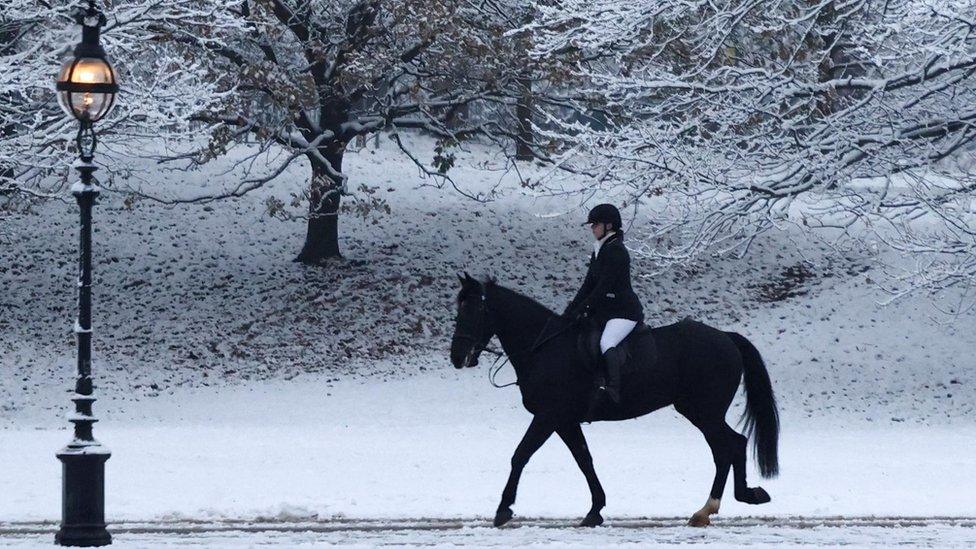Shards of 'sea-ice' wash up along Sefton beach
- Published
Shards of 'sea-ice' wash up along Sefton beach
Shards of so-called sea-ice have washed up on the shore at a beach on Merseyside.
Green Sefton said the formation on Ainsdale beach, Sefton, amid the increasingly icy conditions, was a "spectacular" view.
Sea-ice can form on the surface of calm water when temperatures reach freezing point, the Local Democracy Reporting Service said.
Any turbulence can then quickly break up the ice.
The UK is experiencing cold temperatures, which could reach -10C (14F) in rural areas, the Met Office said.
Green Sefton said: "The seasonal changes bring with them amazing wildlife spectacles."
But they asked people to "show respect to both the landscape and the wildlife that we are so lucky to have in Sefton".
Sefton Council urged residents to take precautions when heading to the coastline during winter and highlighted that there were no RNLI lifeguard patrols on Southport or Ainsdale beaches during winter.

Allow X content?
This article contains content provided by X. We ask for your permission before anything is loaded, as they may be using cookies and other technologies. You may want to read X’s cookie policy, external and privacy policy, external before accepting. To view this content choose ‘accept and continue’.

Analysis
Nikki Berry, BBC Meteorologist Team Lead
The lowest temperature on Thursday night across north-west England was -8.2C (17.2F) at Shap. It was -6.3C (20.6F) in Blackpool and -4.8C (23.3F) in Crosby.
Temperatures rose in Crosby on Friday to 5C (41F), in Blackpool it was below zero until midday and only reached 4C (39F).
The ice likely formed as a very thin layer but was broken up and pushed ashore as the tide came in during the morning, allowing it to pile up along the shoreline.
Very shallow water is more prone to freezing, especially when winds are relatively calm and there are few if any waves. It looks as if conditions were perfect for some ice formation.
I suspect it is fairly rare, perhaps only happening once or twice a year and often not at all.


Why not follow BBC North West on Facebook, external, Twitter, external and Instagram, external? You can also send story ideas to northwest.newsonline@bbc.co.uk, external
- Published9 December 2022

- Published13 December 2022

- Published10 January
